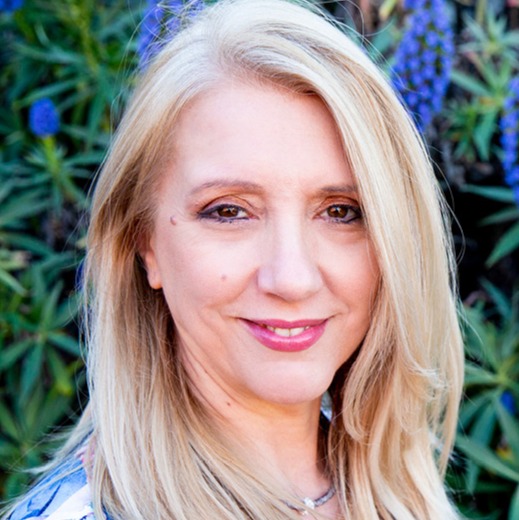
I was standing across Mission Street, admiring the magnificent San Francisco Chronicle Building, founded in 1856 here in California, and my mind started to go through all the thousands of hours of client engagements, workshops and coaching sessions that took me to that moment. I was having an interview with a journalist on my views about leadership and diversity.
A few minutes after my arrival at the coffee shop where we were going to have our meeting, I spotted a young woman with deep blue eyes, a ‘millennial’ -as she described herself-, walking towards me as she asked hesitantly, ‘Is that you, Silvia?’
We greeted each other and quickly dived into a sea of questions and answers. She took notes as I spoke enthusiastically, explaining my perspectives on the topic while aiming to respond to her questions in the best possible manner.
With a tone of frustration in her voice, she asked me how we could get organisations to address the gender diversity issue quickly. She was keen to learn what practical strategies could be applied to make effective changes.
I spoke about awareness, education and talking more openly about the differences that each individual brings to the table when it comes to leadership styles (not just gender related).
I explained to her how the use of ‘quotas’ in other countries (such as Norway, Iceland, Belgium and even in the African parliaments) has helped reduced the gap and accelerated the pace of change. I also commented on how at times, certain things do not change as quickly as we would like, but that doesn’t mean they are not evolving.
We talked for about an hour. I thanked her and left the coffee shop, wondering if I had given her the answers she wanted to hear, or the answers that those who are in charge of organisations are keen to consider.
In my view, the lack of any “kind” of diversity (gender, ethnicity, age, body size or any other) in a group, merely reflects the inability to surpass our own unconscious biases and get our brains to adapt to what’s different, because, let’s be honest, dealing with the unfamiliar requires effort, patience and at times, even compassion. The approach that most people would take is that ‘if the team is working fine and they have the skills to do the job, why bother changing it?’
The answer to this issue does not lie in the hundreds of studies that have been conducted to prove that having more women in an organisation will benefit the bottom line. If that was the case, the ratio would have already changed.
In my opinion, the answer to this issue lies in how willing the decision-makers are when it comes to incorporating more women—or anyone else that falls into the “diverse” category—and in accepting that doing so, is simply the right thing to do. It benefits us all.
Before willingness, however, comes awareness. And as long as we struggle to comprehend that awareness is the beginning of the process, any process, the longer it will take to implement any changes.
Awareness does not mean talking about an issue and thinking that we are changing it by merely doing so. Awareness, or true awareness, is the realisation that creates a feeling or a strong internal need to do something about what has just become part of our consciousness.
To illustrate this point, the topic of diversity has been lingering for a long time. It has been addressed by many people in thousands of blogs and has become the flag that many carry, because they feel strongly about the lack of diversity.
If diversity or the lack of it, is not in the mind of the CEO or the Executive team because they have never experienced the need to deal with this matter personally, it is very likely that it will remain only as an agenda item or a matter of compliance.
I do not know if this post can do much to reach the decision-makers of the organisations who have the power to lead the way. Perhaps some kind of quota will continue to be introduced to accelerate the change that is needed.
What I do know is that each time I recruit anyone for my team, I work on myself to challenge my own biases.
These Stories on Awareness

Founder & CEO
About my Brain Institute
Scientist, educator, author, speaker, coach, award-winning leadership specialist, filmmaker and creator of the i4 Neuroleader Model & Methodology.
Silvia's scientific background and curiosity about the human brain led her to a decade long journey of research into optimal brain functioning and the application of neuroscience in leadership and daily life. Her past and current roles have uniquely prepared her for the current undertaking, that of leadership activist & change agent.
Silvia Damiano founded The About my Brain Institute in 2009, with the purpose of democratising leadership & neuroscience. She has a passionately held belief, that leaders in our 21st century global economy and their organisations must radically change long-held ideas of what constitutes effective leadership
In her ground-breaking books ‘Leadership is Upside Down’, ‘Brain-Friendly Leadership’ and the 2018 documentary ‘Make Me A Leader’, Silvia provides both compelling evidence and explores the importance of leadership in our personal and professional lives and what it takes to develop the human behind the leader.
Silvia has worked in different countries, across many industries, helping teams and organisations improve business performance. Silvia’s clients have described her as a passionate, dynamic, a highly experienced speaker and master facilitator on the topics of Emotional Intelligence, Cultural Change, Neuroleadership & Engagement.
Silvia is passionate about leaving a legacy of well-rounded leaders who can act and decide in a way that better serves humanity. Her clients include Microsoft, Australian Stock Exchange, NSW Government, VISA, Fuji Xerox and Manpower amongst many other global companies.
Monday to Friday
9:00am - 5:00pm (AEST)
Sydney, Australia
We reply within 48 hours!
General Business Enquiries:
hello@aboutmybrain.com
Technical Support:
support@aboutmybrain.com
No Comments Yet
Let us know what you think